Brugmansia Problems: How To Treat Disease And Pests Of Brugmansia
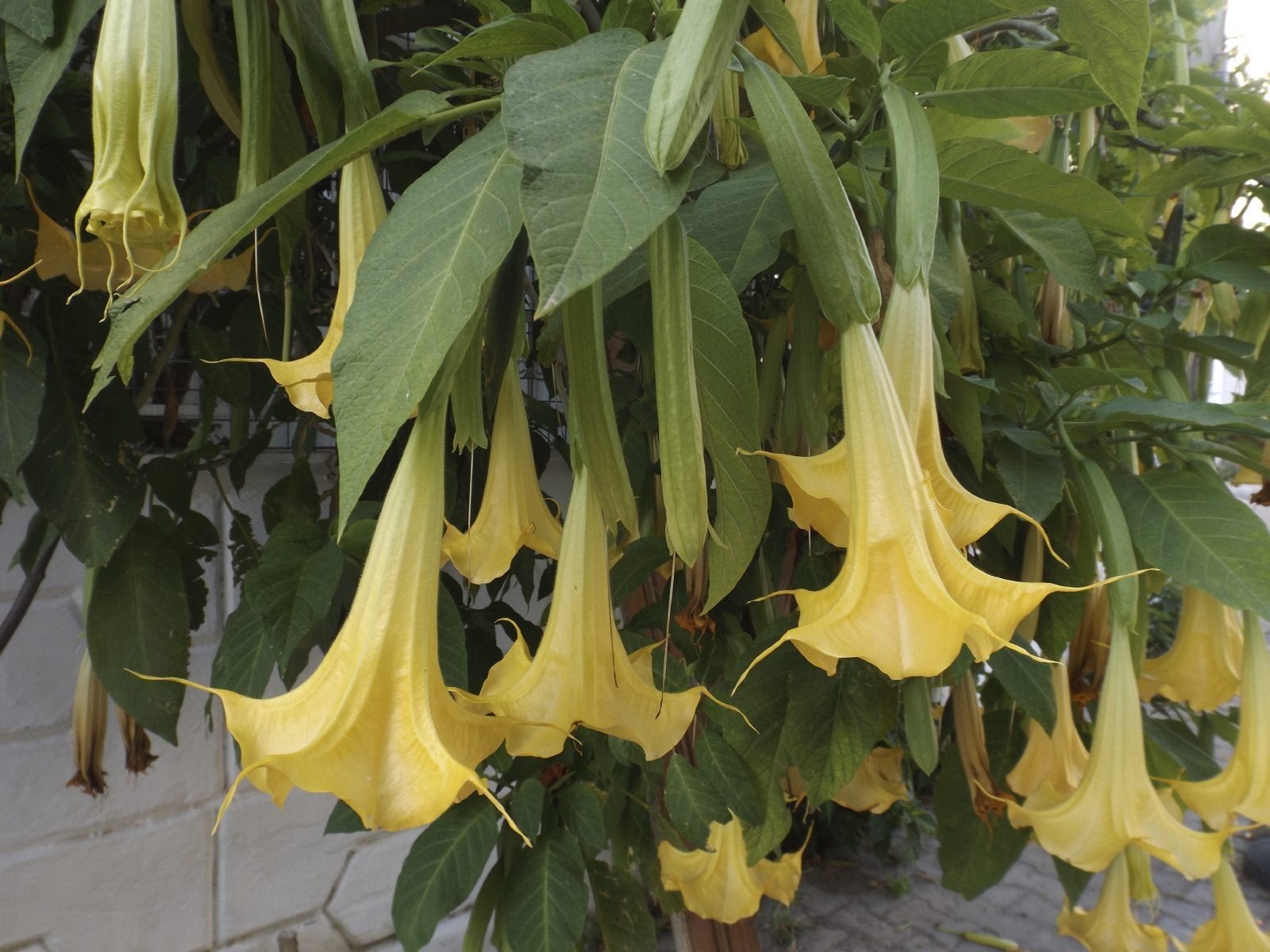

Also known as angel trumpet or simply “brug,” brugmansia is a shrubby plant with masses of impressive, trumpet-shaped flowers measuring up to 20 inches (50 cm.) in length. The stunning blooms appear from spring until early winter. Although little care is required to grow this beauty, brugmansia pests and diseases may compromise the health and longevity of the plant.
Brugmansia Diseases
The most common Brugmansia diseases include:
Fungal wilts
Fungal issues affecting brugmansia include fusarium and verticillium wilt. Both diseases, which enter the plant through the roots and travel up the stem, block transmission of water and cause stunted growth and wilted foliage. Fusarium wilt is usually seen in warm weather, while verticillium is more common when the weather is cool. There are no practical chemical controls for fusarium and verticillium wilt, and the fungi can live in the soil for long periods. The best recourse is to begin with healthy, disease-resistant plants and grow them in contaminant-free potting medium.
Mosaic virus
Tobacco mosaic virus is identified by mosaic-like, yellow or light green areas. Although the virus rarely kills the plant, it can affect its appearance. Once infected, the disease remains for the life of the plant.
Root rot
Rot is a common, usually deadly, fungal disease caused by excessive watering. To prevent root rot, keep the potting mix moist, but never soggy, during the summer months. Decrease watering when temperatures drop in late summer or autumn.
Pests of Brugmansia
Brugmansia problems include pests such as:
Take steps to control the pests without chemicals; avoidance of insecticides is an important aspect of pest management. Chemicals are counterproductive because they kill insects such as lady beetles and lacewings that help keep pests in check. Insecticidal soap is useful in the control of sap-sucking insects and poses minimal danger to beneficial insects. Use the product only as directed, and never spray when beneficial insects are present on the leaves. Neem oil is another option. Tomato hornworms are a different type of pest that can defoliate a plant quickly. The best control is to hand-pick the large, caterpillar-like pests, which are most often seen in mornings and early evenings. If squishing the pests makes you squeamish, drop them into a container of soapy water. Leave hornworms alone if you notice small larvae feeding on the pests. The larvae are trichogramma, parasitic wasps that are extremely effective when it comes to eating the eggs of numerous garden pests. These tiny wasps are highly beneficial in the garden, and they don't sting.
Gardening tips, videos, info and more delivered right to your inbox!
Sign up for the Gardening Know How newsletter today and receive a free copy of our e-book "How to Grow Delicious Tomatoes".

A Credentialed Garden Writer, Mary H. Dyer was with Gardening Know How in the very beginning, publishing articles as early as 2007.
-
 Looking For Plants To Give You The Soft And Fuzzies? Try These 5 Fuzzy Leaf Plant Options
Looking For Plants To Give You The Soft And Fuzzies? Try These 5 Fuzzy Leaf Plant OptionsLovers of texture, drama, silver foliage and tactile plants will adore these special sensory garden additions. These fuzzy leaf plant options will leave you all aglow
By Susan Albert
-
 Get Ready For A Summer Of Hummers! Grow These Full Sun Hummingbird Plants and Flowers
Get Ready For A Summer Of Hummers! Grow These Full Sun Hummingbird Plants and FlowersIf you’re lucky enough to enjoy a sunny backyard, make sure you are maxing out on your pollinator opportunities and grow these full sun hummingbird plants and flowers
By Tonya Barnett
-
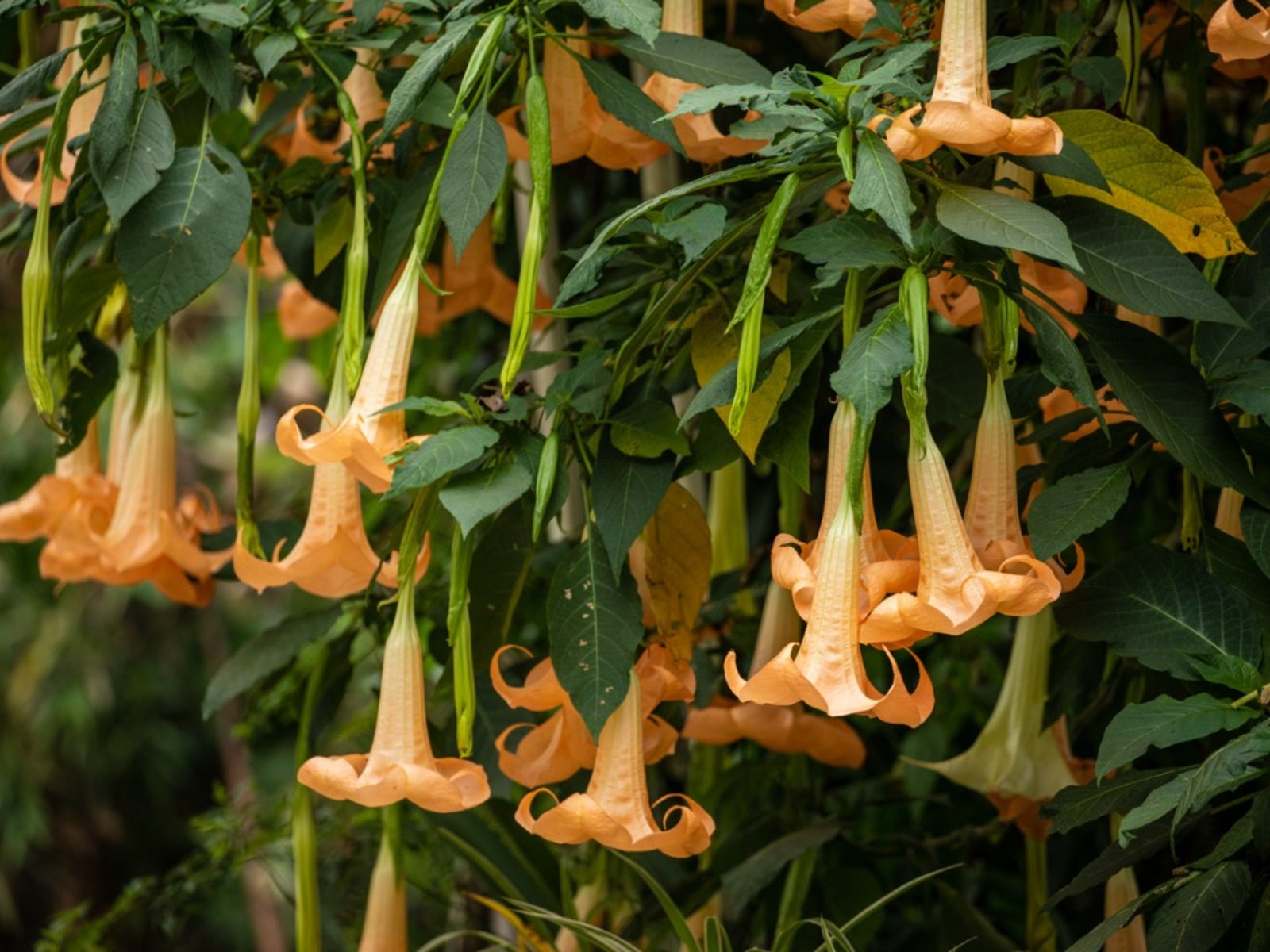 Brugmansia Cold Tolerance: How Cold Can Brugmansias Get
Brugmansia Cold Tolerance: How Cold Can Brugmansias GetHow cold can Brugmansias get and still survive? The United States Department of Agriculture sets Brugmansia cold hardiness in zones 8 to 11. Learn more about the cold tolerance of Brugmansia plants in this article.
By Bonnie L. Grant
-
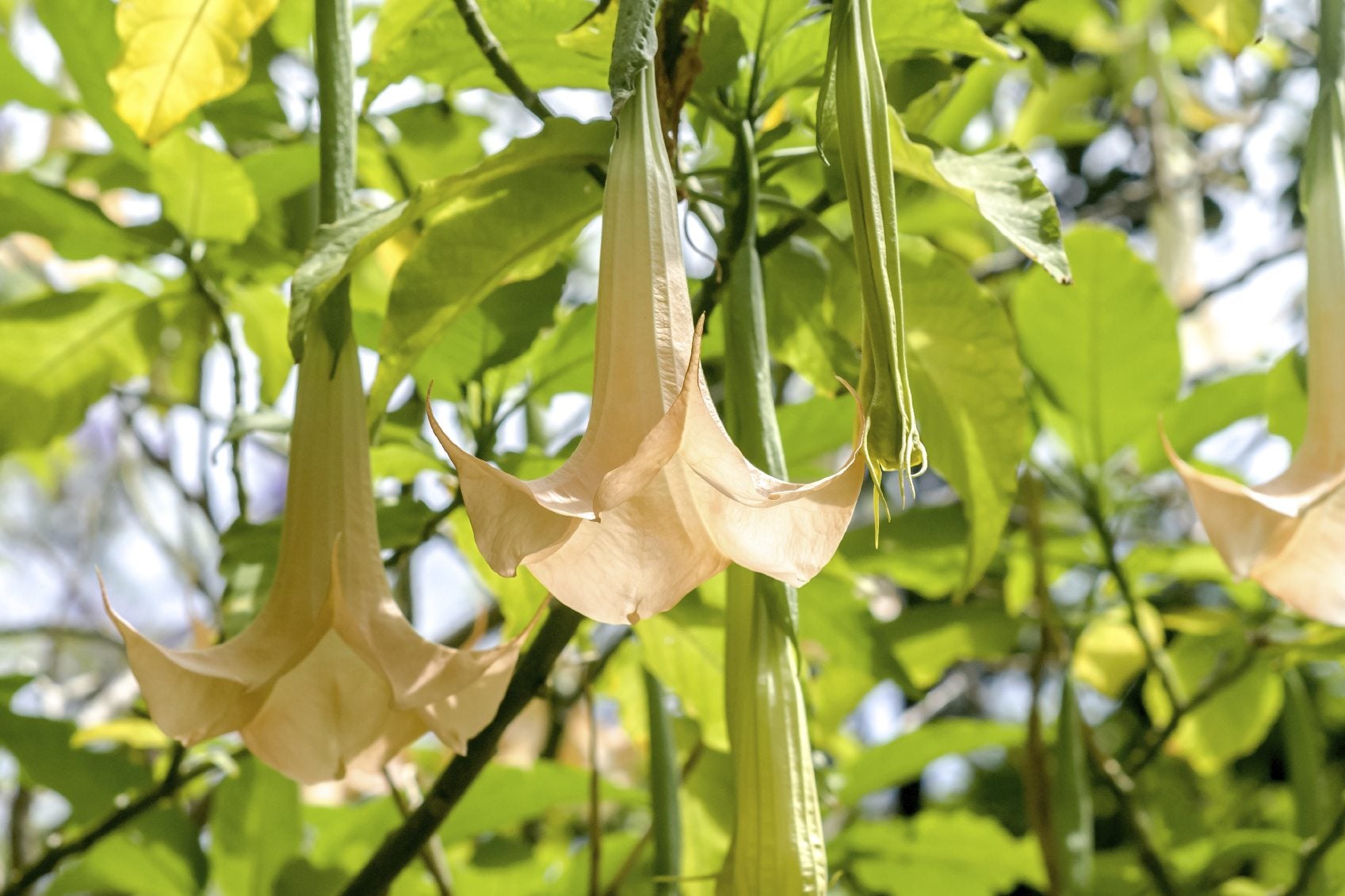 Brugmansia Plant Care: How To Care For Brugmansia In Ground Outside
Brugmansia Plant Care: How To Care For Brugmansia In Ground OutsideGrowing brugmansia in the ground works well in United States Department of Agriculture zones 9 to 12. Try a brugmansia in the garden for show-stopping color and dynamic proportions. This article will help get you started.
By Bonnie L. Grant
-
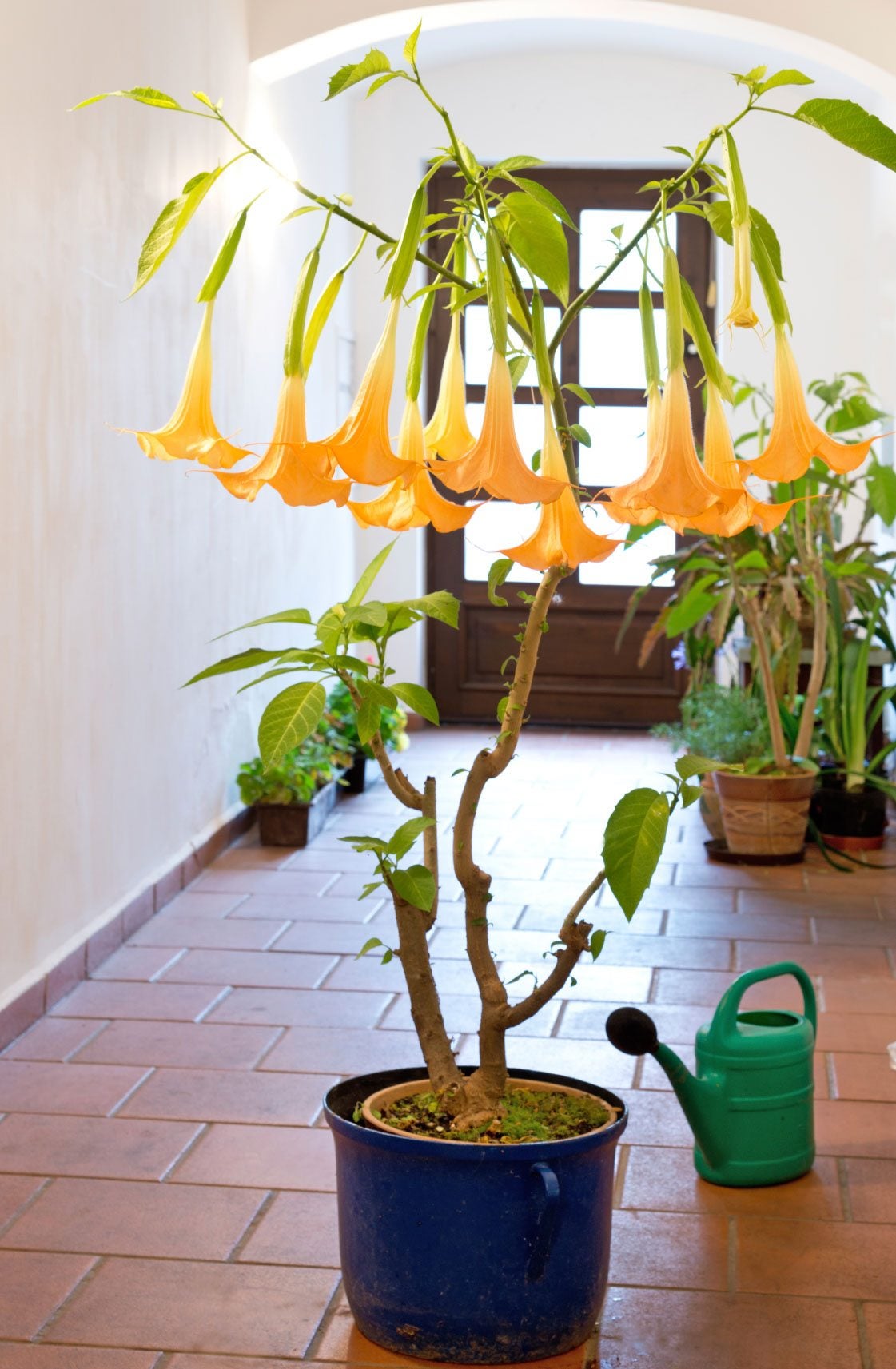 Watering Brugmansia Plants: How Much Water Does Brugmansia Need
Watering Brugmansia Plants: How Much Water Does Brugmansia NeedBrugmansia is a distinctive plant with big leaves and huge, drooping, trumpet-shaped blooms as long as your foot. This flashy tropical plant is surprisingly easy to grow, but it helps to know exactly how to water brugmansias. Click here for more.
By Mary H. Dyer
-
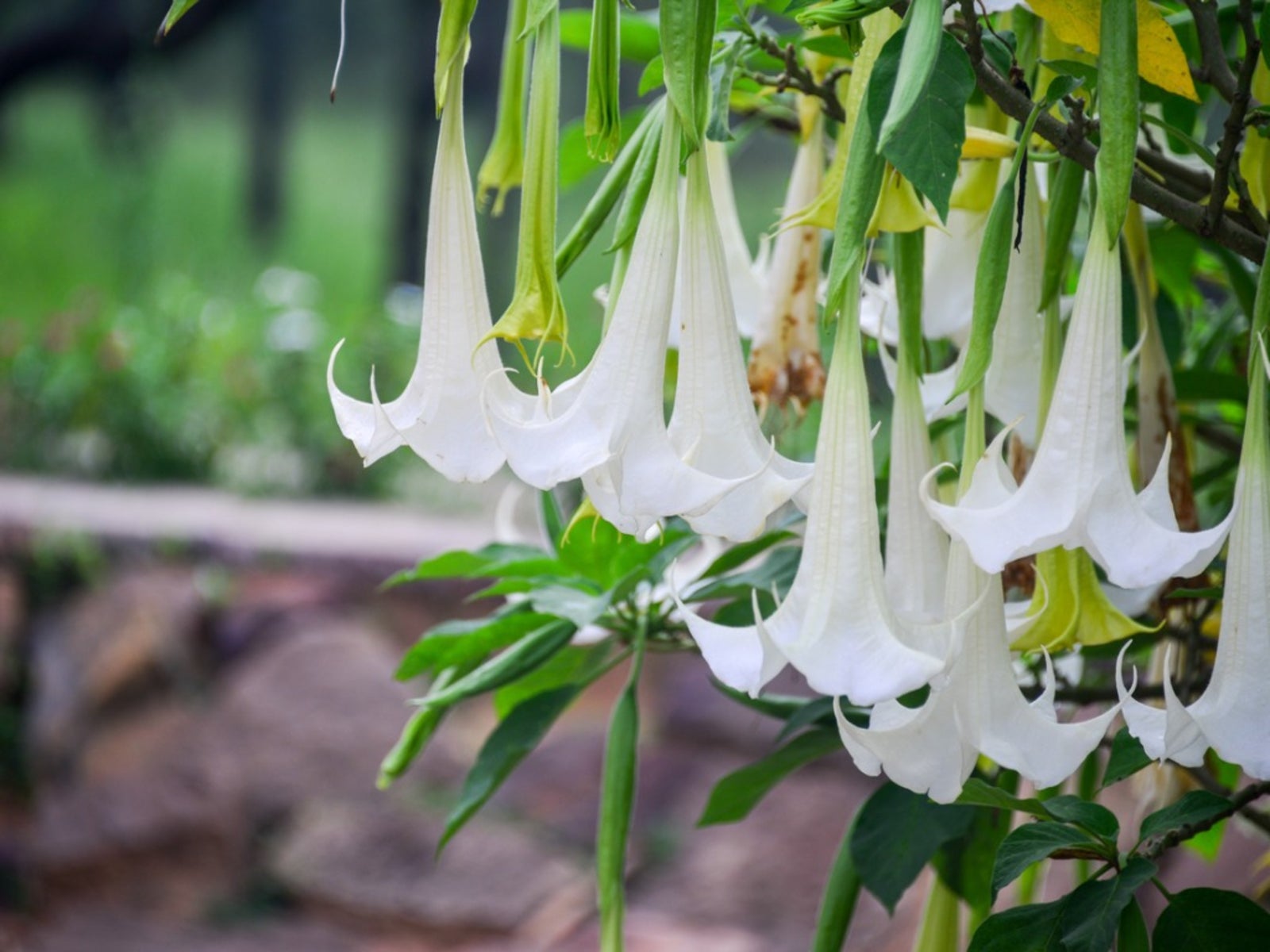 Brugmansia Diseases: Fixing Common Issues With Brugmansia
Brugmansia Diseases: Fixing Common Issues With BrugmansiaIt's never fun to watch a beloved plant fall ill to an unknown disease. Find out more about common brugmansia diseases so you'll be armed and ready should your plant begin to have problems. This article will help.
By Kristi Waterworth
-
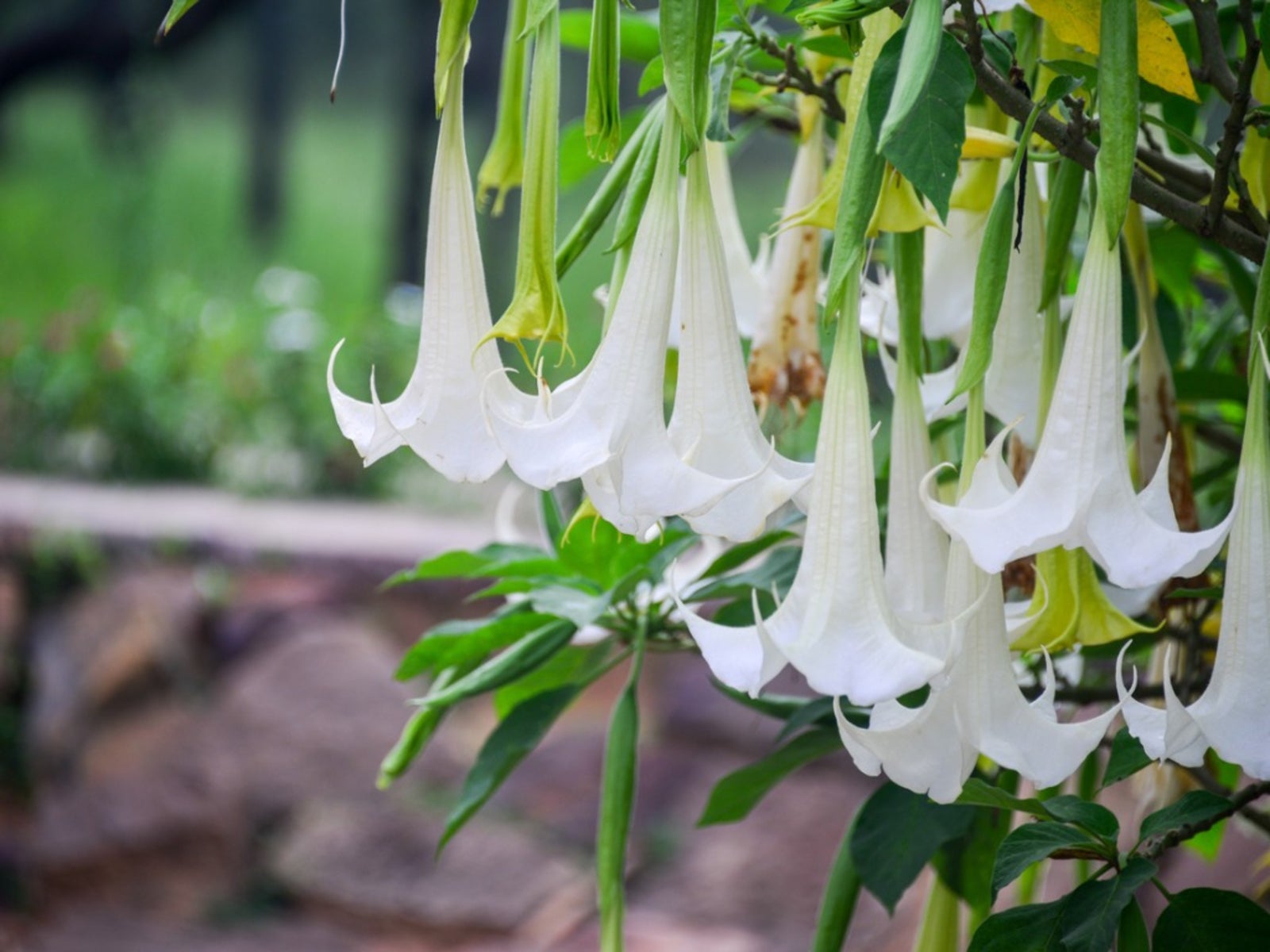 Feeding Angels Trumpet: When And How To Fertilize Brugmansias
Feeding Angels Trumpet: When And How To Fertilize BrugmansiasIf there ever was a flower you just had to grow, brugmansia is it. The plant produces a season long display of trumpet-shaped blooms. Knowing how to fertilize brugmansias will enhance and extend these brilliantly colored flowers. Click here to learn more.
By Bonnie L. Grant
-
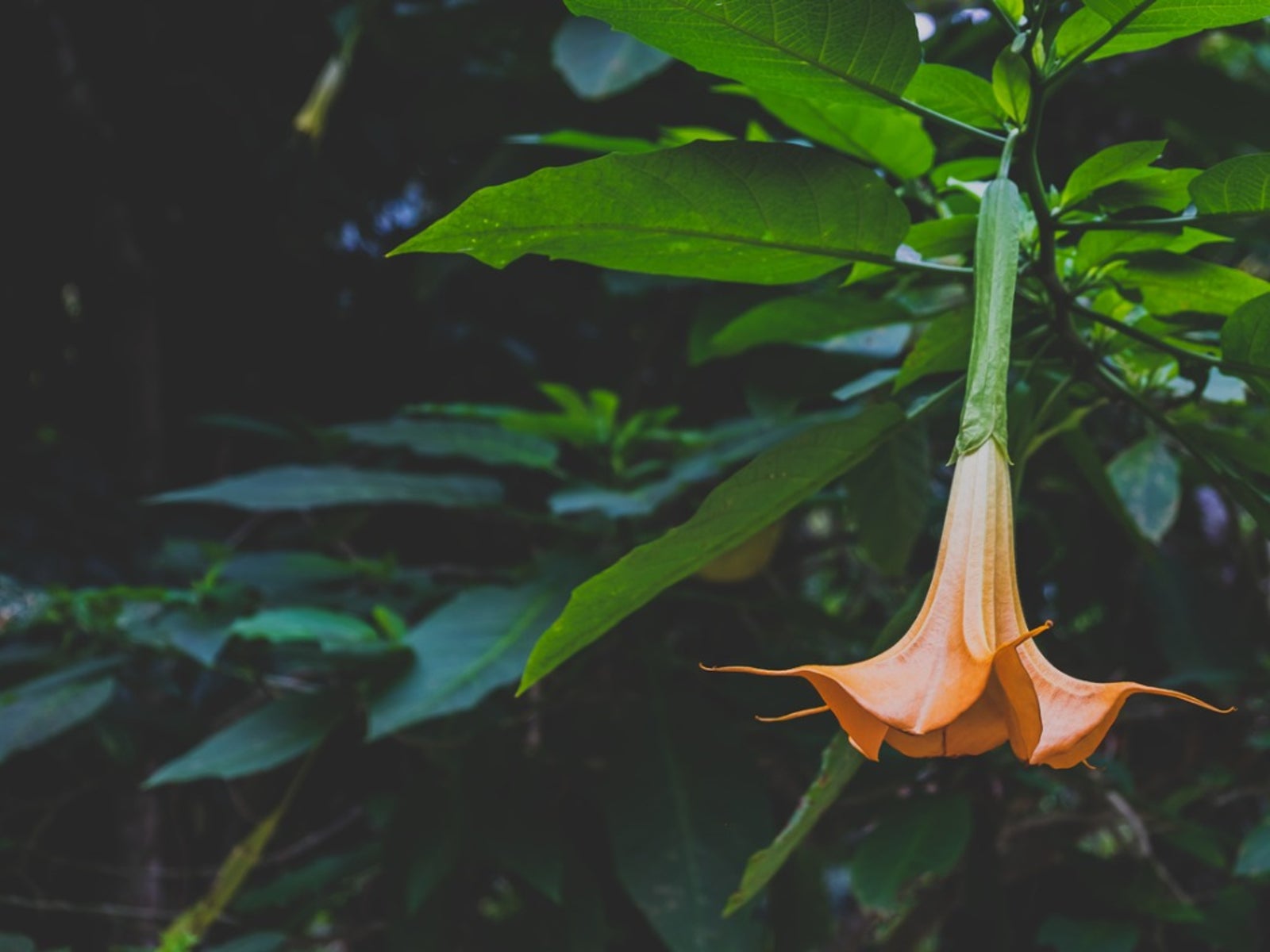 Learn How To Prune Brugmansia Trees
Learn How To Prune Brugmansia TreesBrugmansia plants make attractive specimen plantings. But, in order to keep them looking their best, trimming brugmansia may be necessary. Knowing how to prune brugmansia is important, and this article will help.
By Nikki Tilley
-
 Brugmansia Winter Care - Wintering Brugmansia In Your Home
Brugmansia Winter Care - Wintering Brugmansia In Your HomeWhile most types of brugmansia can thrive outdoors in warm climates, they need to be protected from freezing temps when growing brugmansia in cold climates. Follow the tips here for over-wintering brugmansia.
By Nikki Tilley
-
 Tips For Propagating Brugmansia
Tips For Propagating BrugmansiaBrugmansia is not only easy to grow but propagating brugmansia is easy too. There are three methods of brugmansia propagation - by seeds, cuttings, and air layering. Find the method that works best for you here.
By Nikki Tilley